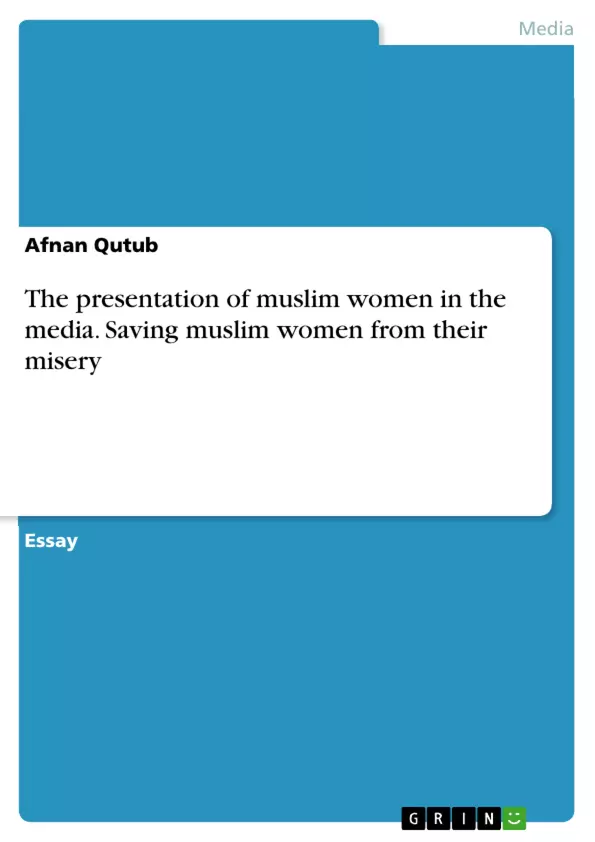This paper analyses the representation of Muslim women in American and Canadian media. First of all, the paper highlights the representations of Muslims as a whole, followed by an analysis of the representation of Muslim women in particular.
The paper also discusses Muslim women’s identities and the veiling practice from their perspectives. Taking into consideration the limitations of previous studies, the paper then proposes various tools or lenses to help with thinking about the identity of Muslim women. Lastly, the paper outlines the positive and negative outcomes of media (mis)representation. Critical analysis has been used as a methodology to uncover oppressive discourse and portrayals when constructing “the other.” Edward Said’s postcolonial criticism of the “Other” and Agenda Setting Theory influenced the theoretical framework.
Inhaltsverzeichnis (Table of Contents)
- Abstract
- The Logic of Research Analysis
- Theoretical Framework
- Overview of Muslim (Mis)representation in the Media
- Who is the Muslim Woman According to Western Media?
- The Muslim Woman from the Standpoint of Muslim Women
- Looking Through a Different Lens
- Negative and Positive Outcomes
Zielsetzung und Themenschwerpunkte (Objectives and Key Themes)
This paper aims to analyze the representation of Muslim women in American and Canadian media, focusing on how Western media constructs and perpetuates stereotypes that misrepresent their identity.
- Misrepresentation of Muslim women in Western media
- The impact of media portrayals on perceptions of Muslim women
- The "otherness" of Muslim women in Western discourse
- The role of postcolonial theory and feminist criticism in understanding these representations
- Exploring the perspectives of Muslim women on their own identities and the veiling practice
Zusammenfassung der Kapitel (Chapter Summaries)
- Abstract: The abstract introduces the paper's focus on the misrepresentation of Muslim women in Western media, highlighting the problematic stereotypes prevalent in American and Canadian media.
- The Logic of Research Analysis: This section outlines the research methodology, emphasizing the use of critical analysis and postcolonial criticism to deconstruct the oppressive discourse surrounding Muslim women in the media.
- Theoretical Framework: This section introduces the theoretical framework for the paper, drawing on Edward Said's Orientalism, Agenda Setting Theory, and Third Wave feminism to understand the construction of "otherness" and the power dynamics at play in media representations.
- Overview of Muslim (Mis)representation in the Media: This section explores the prevalent stereotypes and negative portrayals of Muslims in general, highlighting how these representations contribute to a distorted understanding of their culture and beliefs.
- Who is the Muslim Woman According to Western Media?: This section examines the specific ways in which Western media constructs the identity of Muslim women, often portraying them as oppressed, submissive, and backwards.
- The Muslim Woman from the Standpoint of Muslim Women: This section aims to offer a counter-narrative by exploring the perspectives of Muslim women themselves, challenging the stereotypical representations and providing a more nuanced understanding of their identities and experiences.
- Looking Through a Different Lens: This section proposes alternative lenses through which to understand Muslim women, moving beyond the limitations of previous studies and offering a more critical and intersectional approach.
Schlüsselwörter (Keywords)
This study focuses on the key concepts of otherness, misrepresentation, the veil, Muslim identity, and the power dynamics at play in Western media representations of Muslim women.
- Quote paper
- Afnan Qutub (Author), 2017, The presentation of muslim women in the media. Saving muslim women from their misery, Munich, GRIN Verlag, https://www.grin.com/document/354709



